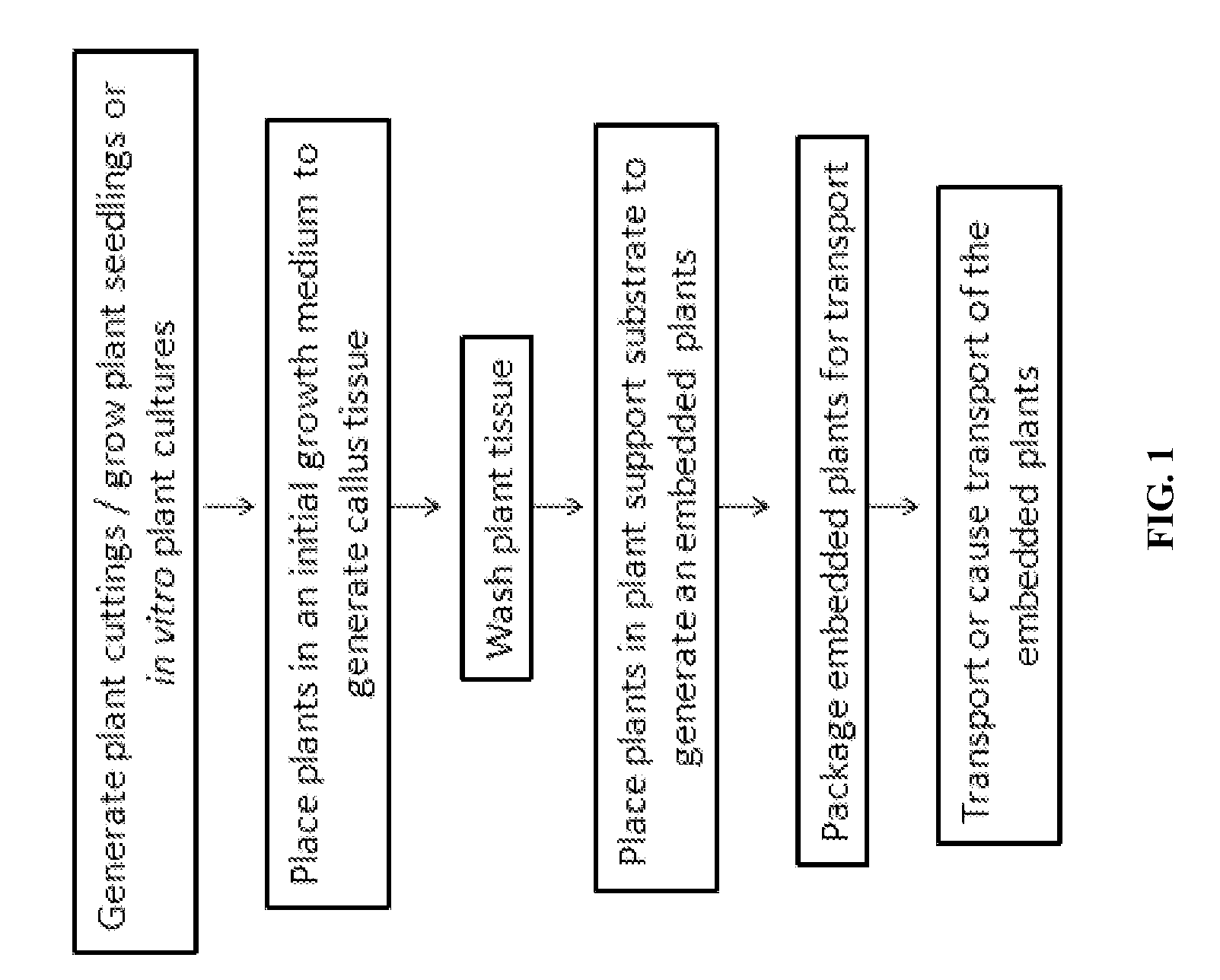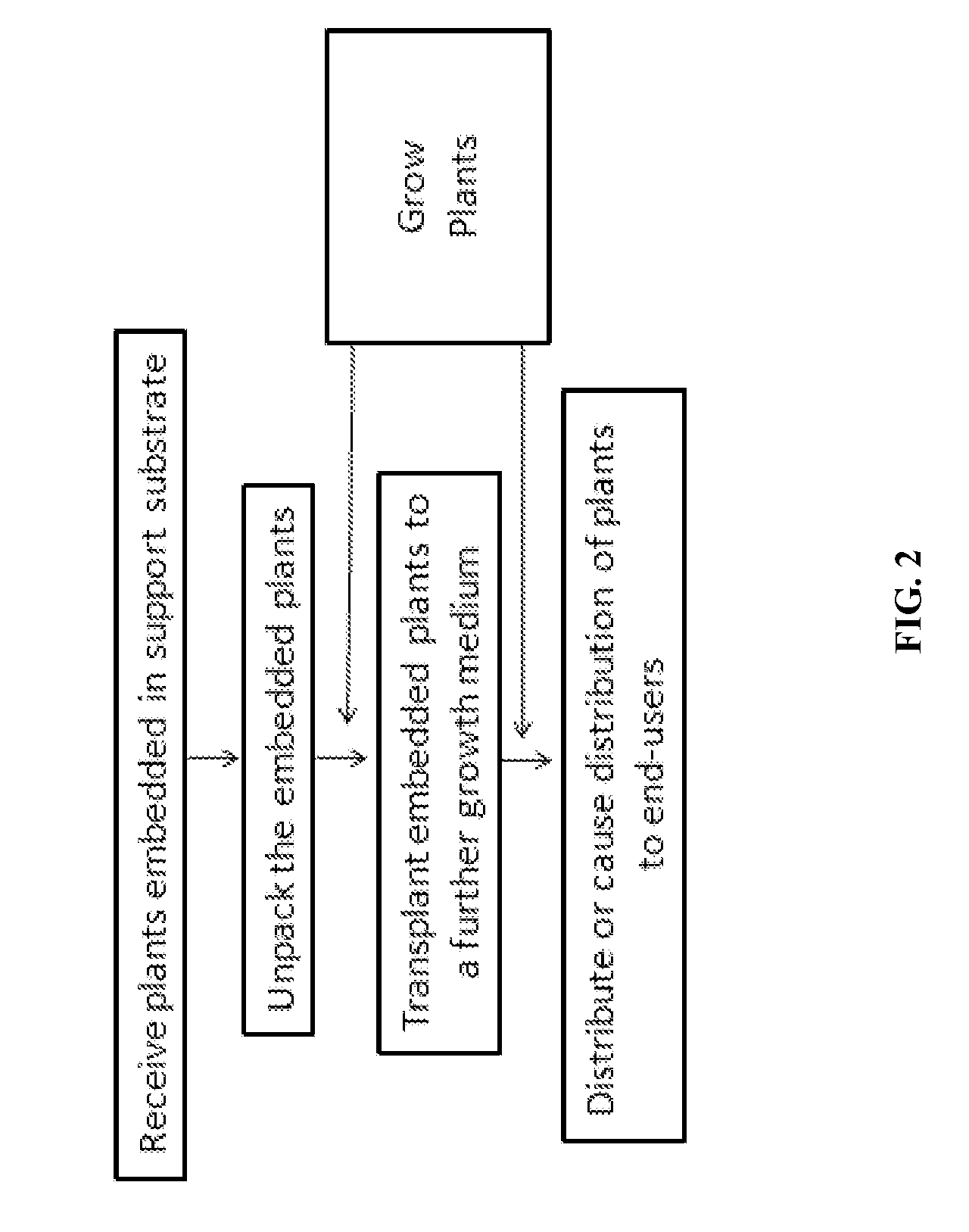Plant growing and distribution systems
a distribution system and plant technology, applied in the field of plant growing and distribution systems, can solve the problems of laborious and expensive initial growth of plants either from seed or cuttings
- Summary
- Abstract
- Description
- Claims
- Application Information
AI Technical Summary
Benefits of technology
Problems solved by technology
Method used
Image
Examples
example 1
Production and Export of Plants
[0046]Ornamental plants, such a poinsettias, are growth in fields or green houses in central America. To prepare commodity plants, cuttings from the mature plants are prepared such that each cutting is capable of regenerating a mature plant. The cuttings are positioned in a first growth medium, such as a soil or synthetic medium, for callusing. Conditions are optimized for callus formation by regulation of temperature and humidity conditions. Plants can be maintained in this initial medium until callus tissue has formed or even until initial root formation begins. Once callus tissue has formed, the plants are removed from the first medium and washed to remove any residual medium or other undesirable organic material.
[0047]Plant support substrates, which are free of organic components such as humus, soil, bark and peat, are prepared by laterally splitting substrate plugs and hydrating the plugs with clean water. Each washed plant is positioned in the pl...
example 2
Import of Plant Cuttings
[0050]Shipping containers arrive the U.S. and are processed at Animal and Plant Health Inspection Service (APHIS) facility. For example, the shipment can be shepherded through the inspection process by a shipping entity (e.g., UPS) that is contracted for such purpose. Once clearing inspection the embedded plants are transported to growing facilities.
[0051]Shipping containers are off-loaded and the trays of embedded plants unpacked. Embedded cuttings can be grown directly in the support substrates used for transport or can be moved into a new medium for growth. In either case, the embedded plants are provided with adequate water nutrient and lighting conditions to support growth and further root development.
[0052]Embedded plants are typically moved to a new medium prior to being distributed to consumers. While the plants can be transplanted by hand, in large-scale operations an automated system is employed. In this case, trays including the embedded plants are...
PUM
 Login to View More
Login to View More Abstract
Description
Claims
Application Information
 Login to View More
Login to View More - R&D
- Intellectual Property
- Life Sciences
- Materials
- Tech Scout
- Unparalleled Data Quality
- Higher Quality Content
- 60% Fewer Hallucinations
Browse by: Latest US Patents, China's latest patents, Technical Efficacy Thesaurus, Application Domain, Technology Topic, Popular Technical Reports.
© 2025 PatSnap. All rights reserved.Legal|Privacy policy|Modern Slavery Act Transparency Statement|Sitemap|About US| Contact US: help@patsnap.com


